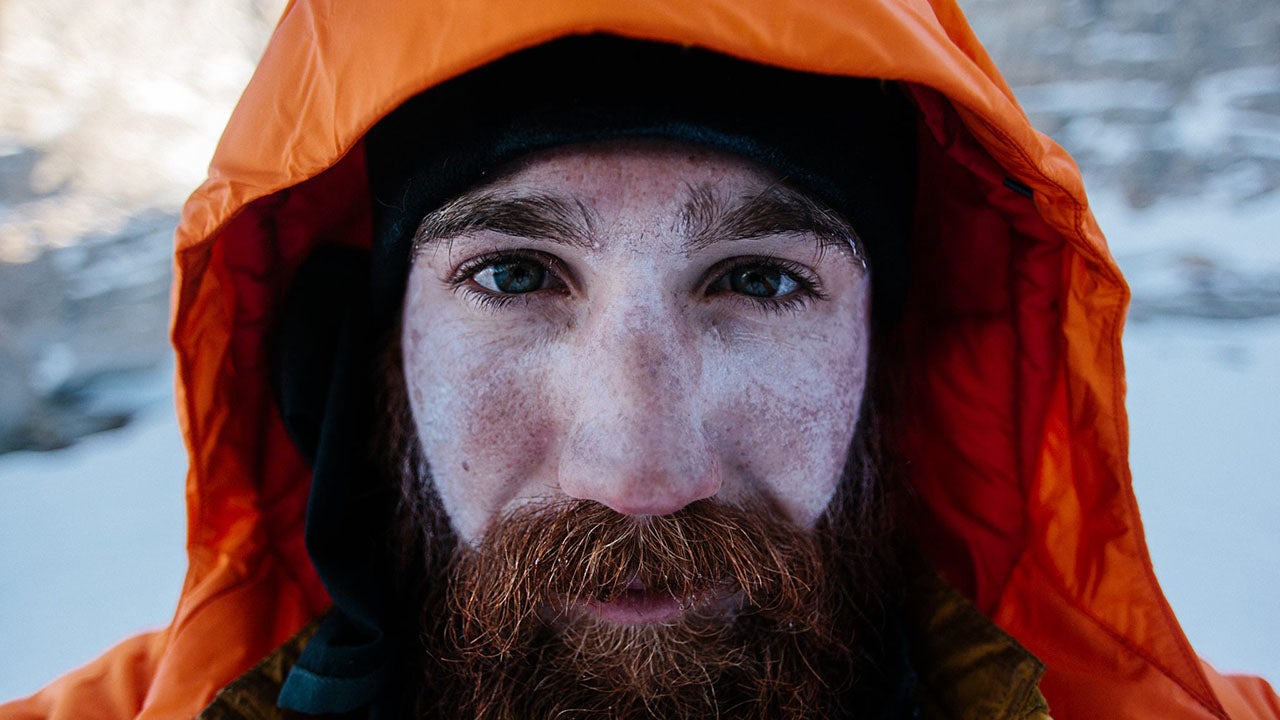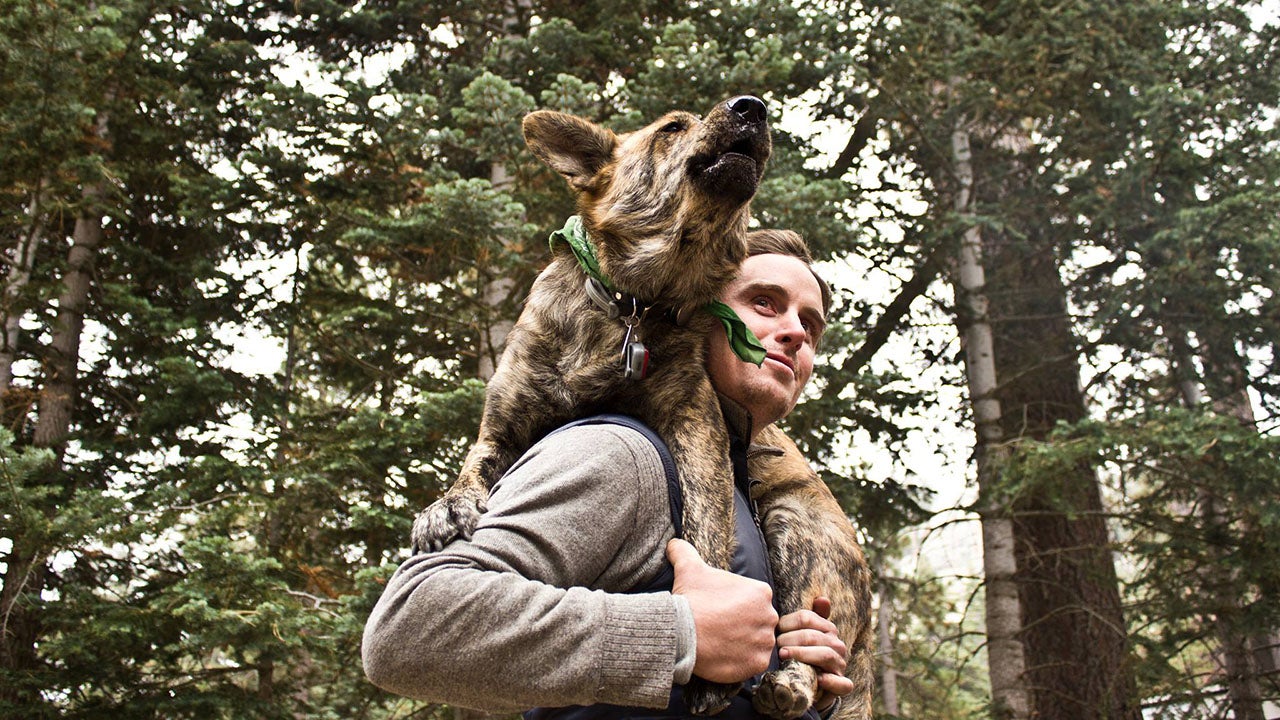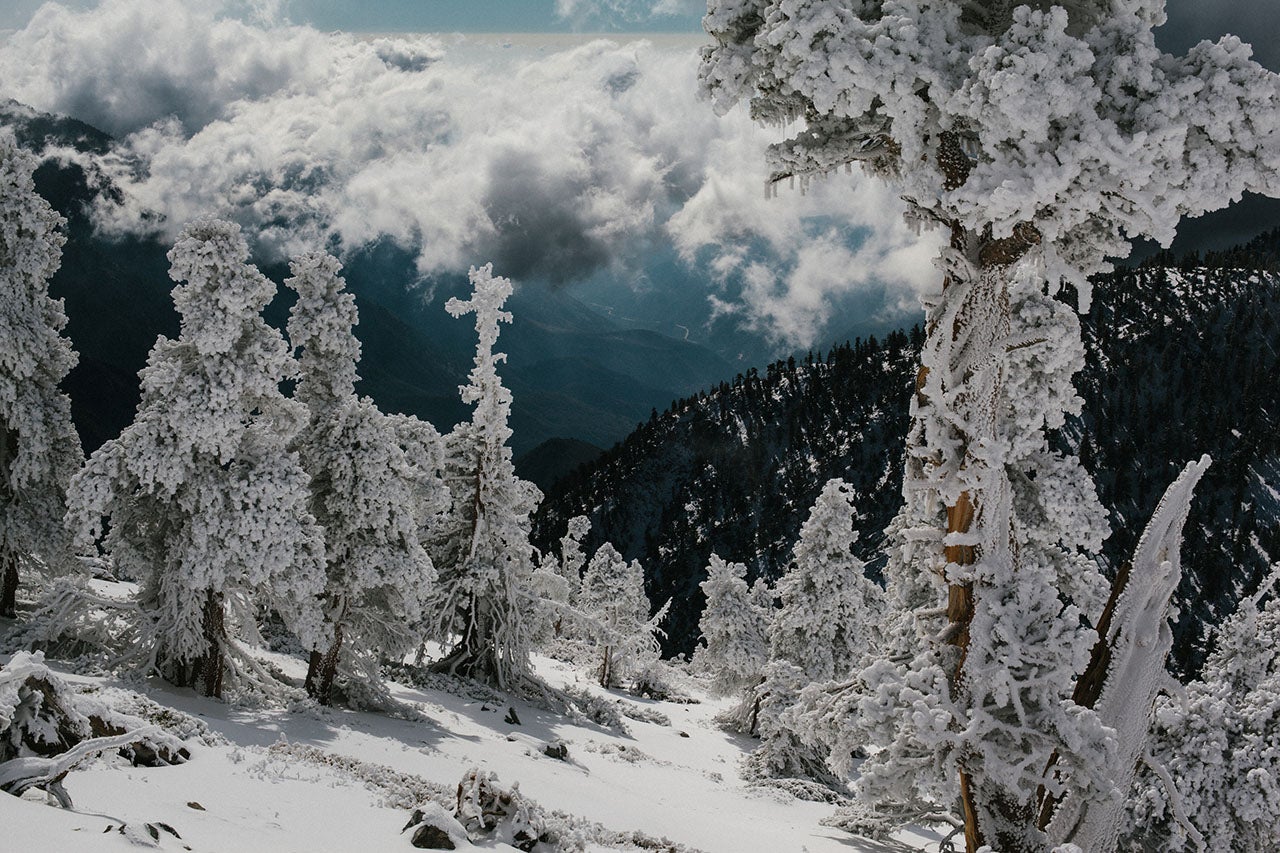How To Stay Warm When It's Cold Outside
I’m constantly shocked by how many people don’t know the basics of dressing for warmth in the outdoors. Even more people aren’t equipped with the basics for sleeping warmly on a cold night. It’s all simple and cheap, read this and make no more excuses.
The need for this article is highlighted by most of the people who join us on group camping trips. To them, I’d like to state once and for all: a pair of fashionably ripped jeans and that sassy flannel shirt you bought at a truck stop on the way up are not adequate attire for any temperature below about 18 degrees Celsius. And, that super cute Poler Napsack you bought at Urban Outfitters might be just the thing for slumber parties with your girlfriends at your family’s vacation home in Palm Springs, but it’s not going to keep you warm under the stars, in the mountains. Please stop it.
Wearing a scarf is as effective as adding a sweater; your neck is full of blood vessels that are close to your skin.
Cover Up: You’ll lose heat from any uninsulated body part. Your mum probably drove this home when she insisted you wear a hat during the winter, but you’ve really got to take care to cover up everything else too. You’ll lose just as much heat from an uncovered neck as you will from your head.
It’s also not good enough to simply add insulation to the body parts that are cold. Your hands are often the first thing to feel a chill. Yes, that’s partially because you’re not wearing gloves, but it’s mostly a symptom of your entire body being cold and prioritizing heating your essential organs in your torso over pumping warm blood out to your extremities to heat body parts you could more easily do without. If your hands are cold, it’s a sign that you’re not doing a good enough job at keeping your whole body warm.
I most often see this in people who aren’t insulating their legs. They will have wool socks, boots and three sweaters on, plus a down jacket and be wearing a wool cap on their head. But, they’re still cold. Why? All they have got on their legs is a pair of jeans. Their legs may not feel any colder than the rest of their body, which feels cold because they’re shedding so much heat from their bottom half.
While your torso does require the most insulation, you can’t neglect your limbs or fail to insulate areas like your neck, head and ears, where blood vessels run close to the surface, losing heat more quickly.
Merino wool base layers, a thick wool sweater that covers my neck, a wool hat and a down vest. It’s around freezing and I’m toasty. Photo: Scott Rankin.
Layer Up: Each additional layer you add traps its own layer of air — what actually provides the insulation — meaning that at the most basic level, each layer you can add makes the job of each layer underneath it easier.
Each layer also has its own unique job to do.
Base Layers: These keep your dry by sucking moisture away from your skin. There’s base layers for every weather condition, even very hot weather, where your body’s natural evaporative cooling effect can be accentuated by specialty garments. Since we’re discussing insulation, assume that any winter base layers add insulation while also keeping you dry. Why’s it important to stay dry when it’s cold? Wearing all this stuff, you can easily break a sweat during even very cold conditions if you engage in strenuous physical activity. This used to kill unprepared outdoorsman back in the day; their sweat would soak their clothes, reducing their ability to hold in warmth, then they’d freeze to death. Thanks to materials advances — both synthetic and natural — that’s no longer the case.
Ideally, your base layer will work across a wide range of conditions. A few years ago, I visited Siberia in November, where temperatures remained a balmy -20 F. I wore the same bases throughout the trip, on the 16-degree aeroplane, in the factory (heated to freezing!) and while riding motorcycles through the snow. Those Patagonia Capilene 3s were able to effectively regulate my body temperature throughout all those environments, I wore them under a pair of jeans and a light sweater on the plane and under multiple layers of insulation while outside. For general cold weather wear, those are the best base layers we can recommend. Stick with the 3s, the level 4 Capilene garments are going to be overkill unless you’re getting gnarly, in which case you hopefully already know what’s covered in this article.
If you’re going to be doing something a little more athletic, you’ll want a base layer that prioritizes sweat wicking over warmth, but still provides insulation when you slow down. Merino wool works great at that. I didn’t once remove Aether’s merino wool base layers during our six-day trip through British Columbia, they worked equally well while riding motorcycles during 85 degree afternoons and in my sleeping bag on 25-degree nights.
Mid-Layers: This is where you want to wear your substantial, bulky insulation. Think down jackets and fleece sweatpants. Wool sweaters also count. This is also likely the first layer you’ll shed as temperatures increase or you transition to athletic activities. Warmth-to-weight and warmth-to-bulk count most here, you want the warmest possible mid-layer with the least amount of size and weight because, as those factors increase, your ability to easily move or even sit comfortably is decreased.
Over my base layers, I’ll typically add a form-fitting Merino Wool sweater, a heavy duty wool sweater and then a down vest or jacket. Switching between the three allows me to deal with changing insulation needs. http://indefinitelywild.gizmodo.com/so-you-want-to…
The Shell: So you’ve taken care of sweat wicking and your next-to-skin insulation with a quality, flexible base layer and your major insulation needs with mid-layers. Now, you need to keep the wind and rain and snow off with your shell.
You’ll see “soft” shell and “hard” shell jackets and pants. Hard shells crinkle when you move and include a waterproof membrane like Gore-Tex that’s breathable. They can be thinner and lighter and more capable at keeping the weather off than a soft shell. But, a soft shell is typically more comfortable to wear and breathes better, but is water and wind resistant over water and wind proof. Which is best for you? For general camping and outdoors activities, the soft shell is easier to wear. If you’re facing extreme weather or even just persistent rain, then you’ll want the hard shell. Most people who regularly go outside in the winter own both and grab whichever one’s going to fit their needs best at any given time.
On either type of garment, look for pit zips and other vents that you can open up as you start doing athletic stuff or temperatures increase. These are killer if it’s fairly warm, but still wet out or if you just need to let your body breathe a little more. Zip them all up if you’re cold.
With pants, jeans are typically adequate for basic camping if you’ve got a good base layer underneath, but you’ll be better served by a quality pair of purpose-designed pants. I just took delivery of a pair of Makers and Riders 3-Season Commuter Weatherproof Jean and can report that they have nailed the combination of fit and style with technical functionality and weatherproofness.http://indefinitelywild.gizmodo.com/ferries-bears-…
Feets and Hands: The same layering principle applies to your feet and hands. You’ll be warmest and driest with good silk sock or glove liners worn under a wool insulation layer. Your boots should add a little insulation while keeping the weather off (you want either a membrane or waterproofed leather, most people are served best by a membrane, it’s idiot-proof). And the outer layer of your gloves should provide the same. With your gloves, look for that membrane to be laminated to the shell, which increases dexterity over separate layers. A pair of cute wool glovesies will keep your hands warm if all you’re doing is sitting around a campfire, but you need weather protection if you’re doing anything more. We all hopefully know that mittens wear warmer by allowing your fingers to help warm each other, but that design massively decreases dexterity.
When buying boots, make sure there’s adequate room to wear both those silk sock liners and a good pair of thick wool socks. Too-tight boots will limit your circulation. As a note on socks, those really heavy, loosely-woven wool socks aren’t going to be as effective as a tight pair of tightly-woven wool socks of the kind sold by SmartWool or WigWam or REI or just about any other reputable outdoors brand.
This, top and remaining photos: Chris Brinlee Jr.
Head and Neck: A basic wool skull cap, toque or anything else made of a material that won’t loose its insulation when wet is typically enough insulation for your head. Same goes for your scarf — buy a wool or silk one or use sweaters and jackets that seal your neck off tightly.
What Insulation Does: Insulation insulates — it maintains a temperature. That means you’re responsible for creating the warmth. If you’re cold when you crawl into a sleeping bag, you will stay cold. Warm up first by doing jumping jacks or cheat and fill your (heavy duty) water bottle with hot water before going to bed, then take it into the bag with you. Don’t have a decent water bottle or hot water? Wrap hot rocks from the fire ring in a towel or jacket and take them into the bag with you. You’ll be surprised at how effective all three methods are.
How To Sleep Warmly And Comfortably: Sleeping bags come with a minimum temperature rating. This is as an extreme, they’re only comfortably down to about -12 or -9 degrees above that number, depending on how you sleep.
Also realise that it gets cold in the mountains, colder than you’ll likely see forecast, which will be fore the nearest town and may not account for additional elevation or local weather conditions where you’re actually camping. Take a warmer bag than you think you’ll need, you’ll never regret doing so.
Want a single bag to use year-round? Buy a quality down item rated to -7 degrees. On hot summer nights, open it up or sleep on top of it. During the spring and fall it will be perfect. If temperatures drop, wear your base layers, hat and socks to bed.
That Poler Napsack? It’s rated to 10 degrees, meaning it’s no more effective than sleeping on the ground wearing a sweater. That doesn’t sound terribly comfortable does it? If you want a super cute sleeping bag you can like totally poke your hand and feet out of so you can wear it around the fire, Sierra Designs sells a similar design that’s actually a real sleeping bag capable of keeping you warm.
But, a sleeping bag isn’t enough. The cold ground will literally suck the heat right out of you unless you protect yourself from it. That’s the job of a sleeping pad. Consider their R values when shopping or just buy our favourite pad, the Therm-A-Rest NeoAir All-Season; it will be plenty warm for most general campers and is light and small enough for backpacking while providing incredible comfort. We’re also putting together a comprehensive sleeping pad comparison test as we speak, look for that in the near future.
Putting a thick wool blanket on your tent’s floor also helps insulate you from the cold ground while protecting the floor from debris and you and your dog walking all over it.
Tents are also capable of adding significant warmth. Know how heat rises? A tent sized closely to your body/bodies will retain more warm air, closer to your body than a big, giant cabin design. Put the rain fly on to hold that air in. http://indefinitelywild.gizmodo.com/the-time-icela…
I think that covers the basics. There’s a huge variance in performance between base layers and other cold weather gear. If you have a particularly good or bad experience with something, why don’t you tell us about it in comments. Want to be warmer? No question is dumb.
IndefinitelyWild is a new publication about adventure travel in the outdoors, the vehicles and gear that get us there and the people we meet along the way. Follow us onFacebook,Twitter and Instagram.





